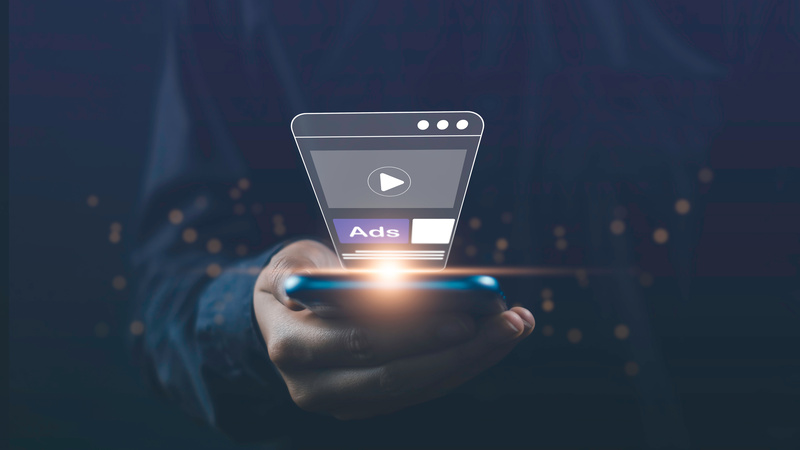Programmatic advertising is revolutionizing digital marketing by automating the buying and selling of digital ads.
Leveraging artificial intelligence and machine learning, this method enhances efficiency, targeting capabilities, and return on investment. In this comprehensive guide, we'll explore programmatic advertising what is, how it works, its benefits, and best practices to help you succeed in digital marketing.
What is Programmatic Advertising?
Programmatic advertising is an automated process of buying and selling digital ads using advanced algorithms and data insights. Unlike traditional methods that rely on human negotiations and predefined prices, programmatic advertising leverages AI to purchase ads in real-time. This approach allows advertisers to target audiences more precisely and publishers to monetize their content more effectively.

How Programmatic Advertising Works
The process of programmatic advertising involves several steps, each crucial for the successful delivery of ads. Understanding these steps helps in grasping the complexity and efficiency of this advertising method.
Publisher Lists Ad Space
The publisher lists available ad space on an ad exchange using a Supply Side Platform (SSP).
Data Collection
A pixel on the publisher's website sends data to a Data Management Platform (DMP) about the site, user, and ad space.
Advertiser Configures Campaign
The advertiser sets targeting and budget parameters using a Demand Side Platform (DSP).
Inventory Search
The DSP connects with the DMP to find suitable ad inventory on the ad exchange.
Auction Process
The ad exchange conducts an auction to select the highest-paying ad that matches the impression opportunity.
Ad Display
The DSP sends the winning ad back to the SSP to display on the publisher's website.
Components of Programmatic Advertising
Programmatic advertising involves several key components that work together to create a seamless ecosystem.
Demand Side Platform (DSP)
Advertisers use DSPs to configure their audience targeting preferences and purchase ad space. Examples include Google Display and Video 360, Xandr, MediaMath, and Adobe Advertising Cloud.
Supply Side Platform (SSP)
SSPs enable publishers to sell ad space to multiple demand partners at the best price through auctions. Popular SSPs include OpenX, Xandr, and PubMatic.
Data Management Platform (DMP)
DMPs collect, organize, and analyze data from various sources to help match ads with the right audience. Notable DMPs include Nielsen, Lotame, Oracle, and Salesforce Audience Studio.
Ad Exchange
The ad exchange is the marketplace where DSPs and SSPs negotiate prices and trade ad inventory. It plays a central role in the programmatic advertising ecosystem.
Programmatic Advertising Platforms
Programmatic advertising platforms are essential tools that enable the automation of ad buying and selling. These platforms provide the necessary infrastructure and technology to execute programmatic campaigns effectively.
Google Display and Video 360
Part of Google's marketing platform, this tool offers comprehensive solutions for managing programmatic campaigns across display and video formats.
The Trade Desk
Known for its robust data capabilities, The Trade Desk allows advertisers to manage data-driven ad campaigns across various channels.
MediaMath
MediaMath offers a powerful DSP that integrates data, media, and machine learning to optimize ad performance.
Adobe Advertising Cloud
This platform provides a unified solution for managing all aspects of digital advertising, from media planning to execution and analysis.
Amazon DSP
Amazon DSP offers programmatic access to Amazon's audience and inventory, making it a powerful tool for advertisers looking to reach shoppers both on and off Amazon.
Types of Programmatic Advertising
Programmatic advertising encompasses various types, each offering unique benefits. Knowing these types helps in selecting the best approach for your needs.
Programmatic Display Advertising
This involves using programmatic platforms to display ads on websites, ensuring precise targeting and higher engagement rates.
Header Bidding
Publishers offer their ad inventory to multiple demand partners simultaneously, increasing competition and maximizing revenue.
Exchange Bidding
Also known as open bidding, this technology invites multiple third-party ad exchanges to participate in auctions for ad inventory.
Real-Time Bidding (RTB)
RTB allows ad space to be sold through real-time auctions, typically using a CPM pricing model.
Open Auction
The most popular form, where publishers allow hundreds of demand partners to bid on their inventory through SSPs.
Private Marketplace (PMP)
A limited auction where publishers invite select advertisers to bid on premium inventory.
Programmatic Guaranteed
Direct negotiations between publishers and advertisers for a fixed number of impressions at a fixed price.
Preferred Deals
Publishers offer ad inventory to selected advertisers at a negotiated fixed CPM, without an auction process.
Conclusion
Programmatic advertising what is revolutionizing digital marketing with its automated, data-driven approach. By understanding its components, benefits, and best practices, you can enhance your marketing efforts and achieve greater ROI. For expert assistance in implementing programmatic advertising, consider partnering with USA Link System, where our comprehensive services will help you navigate and succeed in the digital landscape.

















Leave a Comment
Comments (0)